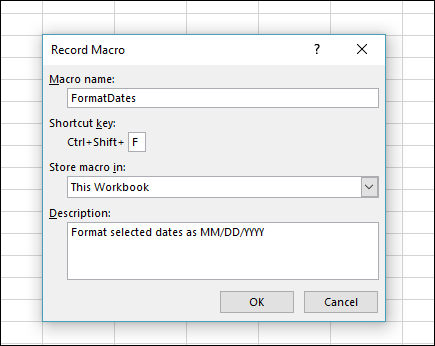

So let's move towards the steps of How to Create Macros in MS Excel 2016.

If x.Value = Sheets("Sheet2").Cells(iCtr, 1).Value Then A macro record the actions, it can be a mouse click, keystroke, or modification in a font, etc. Workout Example 06 - Designing survey form in Excel VBA with option buttons / list box etc. directly writing output into a text file. ' Loop through all records in the second list. Workout Examples 05 Reading data from a microsoft access database and writing it into a text file. ' Get count of records to search through (list that will be deleted). To use the macro, select either sheet, and then run the macro. The second list is on Sheet2 in the range A1:A100. The first list is on Sheet1 in the range A1:A10. The following sample macro compares one (master) list against another list, and deletes duplicate items in the second list that are also in the master list. Sample 2: Compare two lists and delete duplicate items ' Increment counter to account for deleted row. We received a great question in the comments of my previous YouTube video on How to Add New Items to a Drop-down List Automatically. Automatically Sort Data Validation.xlsm (92.7 KB) 4 Ways to Sort Drop Down Lists. Sheets("Sheet1").Cells(iCtr, 1).Delete xlShiftUp Heres a copy of the file I use in the video so you can practice sorting data validation lists automatically. If ActiveCell.Value = Sheets("Sheet1").Cells(iCtr, 1).Value Then If ActiveCell.Row Sheets("Sheet1").Cells(iCtr, 1).Row Then ' To specify a different column, change 1 to the column number. IListCount = Sheets("Sheet1").Range("A1:A100").Rows.Count ' Get count of records to search through. ' Turn off screen updating to speed up macro. Hey, can you do the opposite of this - not random order but this is my situation.

The event macro is triggered when a record is entered and sorts the first column from small to large or A to Z. If your list does contain empty cells, sort the data in ascending order so that the empty cells are all at the end of your list. Sort values in an Excel table programmatically VBA This article demonstrates how to sort a specific column in an Excel defined Table based on event code. This macro requires that you do not have empty cells in the list range. The following sample macro searches a single list in the range A1:A100 and deletes all duplicate items in the list. Sample 1: Delete duplicate items in a single list Microsoft support engineers can help explain the functionality of a particular procedure, but they will not modify these examples to provide added functionality or construct procedures to meet your specific requirements. This article assumes that you are familiar with the programming language that is being demonstrated and with the tools that are used to create and to debug procedures. This includes, but is not limited to, the implied warranties of merchantability or fitness for a particular purpose. Microsoft provides programming examples for illustration only, without warranty either expressed or implied.


 0 kommentar(er)
0 kommentar(er)
